Birds are a delightful addition to our outdoor spaces, but when they start nesting or foraging in our hanging plants, it can lead to messy and damaged foliage.
If you’re seeking ways to keep birds out of your hanging plants, there are various simple and humane methods you can employ. By implementing a few effective strategies, you can create an environment that discourages birds from nesting or feasting on your beloved greenery.
Let’s explore some practical solutions to help you maintain your hanging plants bird-free and thriving. Make sure to check all the sections well so that you will have no confusion left.
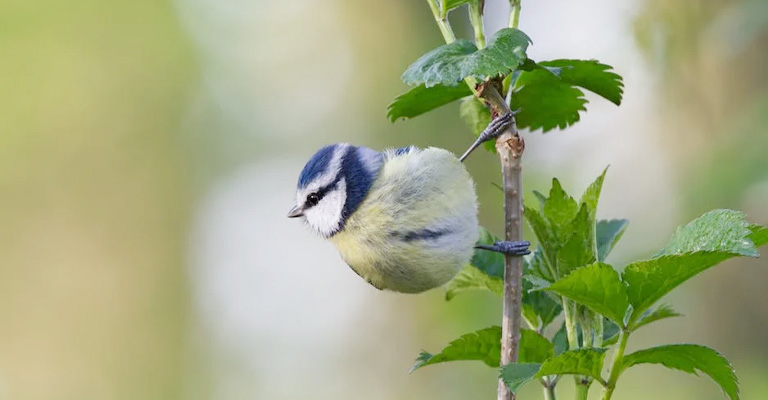
The Behavior of Birds in Context of Their Attraction to Hanging Plants
Birds are naturally attracted to hanging plants for several reasons. Firstly, hanging plants provide an elevated vantage point for birds, allowing them to survey their surroundings and spot potential food sources or predators.
Additionally, hanging plants often offer shelter, protection, and a potential nesting site for birds. The dense foliage and height of the hanging baskets provide a secure environment for building nests and raising young.
The Problems Associated With Bird Nesting in Hanging Baskets
While bird nesting may seem harmless or even charming, it can lead to various issues for gardeners. Firstly, bird nests in hanging baskets can cause damage to the plants themselves.
Birds may pull out or damage the plants’ foliage, flowers, or roots while constructing their nests. This can negatively impact the health and aesthetics of the hanging plants.
Moreover, bird nests often result in a buildup of droppings and debris, which can create unsightly messes and pose hygiene concerns. Bird droppings can damage the surfaces beneath the hanging baskets, including decks, patios, or furniture.
Additionally, excessive droppings can attract pests and lead to the spread of diseases.
Benefits of Finding Humane Solutions to Bird Deterrence
It is crucial to address the issue of birds nesting in hanging baskets using humane methods. By finding humane solutions, we can avoid causing harm or distress to birds while maintaining a harmonious environment for both them and our plants.
Humane bird deterrence methods respect the natural behaviors and needs of birds while protecting our gardens.
Using humane solutions also promotes a sense of ethical responsibility towards wildlife and the environment. It allows us to appreciate the beauty and diversity of birds while striking a balance between their presence and our desire to cultivate a thriving garden.
Furthermore, finding humane solutions encourages a sustainable approach to gardening that aligns with conservation efforts and fosters coexistence with nature.
Preemptive Measures to Keep Birds Out of Hanging Plants
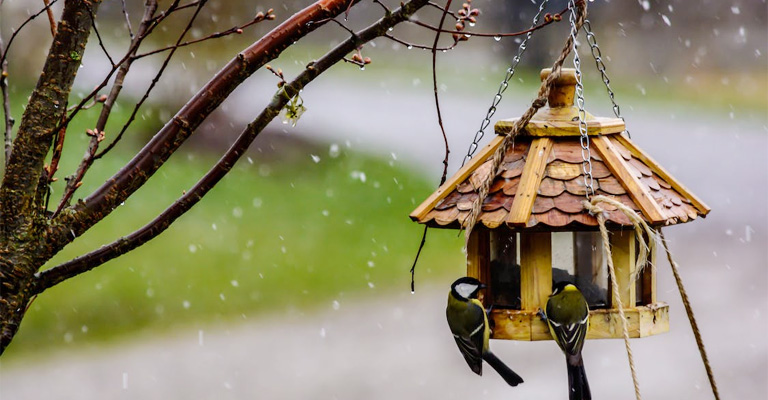
These are some essential measures you can take to keep your birds out of hanging plants. You can follow the below factors in this case.
Selecting Bird-resistant Plant Varieties
One of the proactive steps to prevent bird nesting in hanging baskets is to choose plant varieties that are less attractive to birds. Certain plants have characteristics that make them less appealing as nesting sites or food sources for birds.
For example, plants with thorny or prickly leaves, strong scents, or textures that birds find unappealing can be effective deterrents. By selecting bird-resistant plant varieties, we can reduce the likelihood of birds being attracted to our hanging baskets in the first place.
Proper Placement of Hanging Baskets
The placement of hanging baskets plays a crucial role in bird deterrence. By strategically positioning the baskets, we can minimize the attractiveness of the area to birds.
Avoid placing hanging baskets near trees or structures that birds can use as launching points for accessing the plants. It is also advisable to keep hanging baskets away from bird feeders, as the proximity to a food source can attract birds.
By carefully considering the placement of hanging baskets, we can make them less inviting to birds and discourage nesting behavior.
Choosing Bird-friendly Materials for Hanging Planters
When selecting materials for hanging planters, it is beneficial to choose options that are less appealing to birds. Avoid materials that mimic natural nesting sites or offer suitable perching surfaces for birds.
For example, materials such as straw or twine can be attractive to birds as they resemble nest-building materials. Opting for materials like metal, plastic, or glazed ceramics can make the hanging planters less conducive to bird nesting.
By choosing bird-friendly materials, we can create an environment that is less attractive to birds and reduce the likelihood of nesting in our hanging baskets.
By taking preemptive measures such as selecting bird-resistant plant varieties, placing hanging baskets strategically, and choosing bird-friendly materials, we can proactively discourage birds from being attracted to our hanging planters.
These measures form an essential foundation for effective bird deterrence and help create an environment that is less appealing for nesting activities.
Regular Nest Removal from Hanging Plants
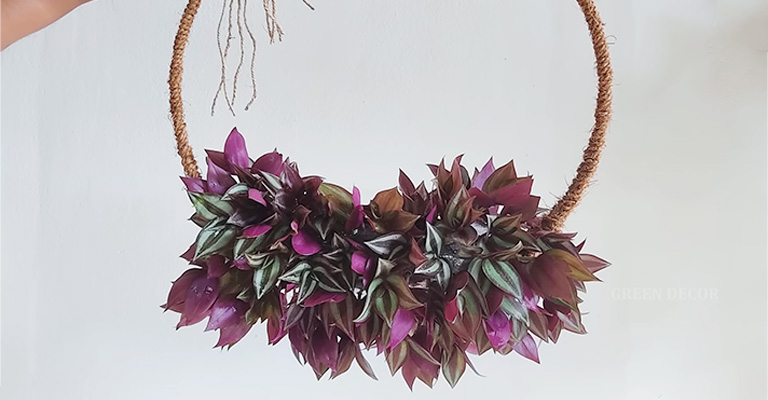
Removing nests from the hanging plant is pretty much difficult from the hanging plant. But you can do it. For that, you should follow the below tricks.
Importance of Removing Nesting Materials Promptly
Prompt removal of nesting materials from hanging baskets is crucial for effective bird deterrence. When birds find a suitable nesting site, they tend to return to the same location year after year.
By removing nests promptly, we disrupt this nesting cycle and discourage birds from establishing a habit of nesting in our hanging baskets. Additionally, removing nesting materials prevents the accumulation of debris, droppings, and potential pests that can affect the health and cleanliness of our plants.
It also sends a clear message to birds that the hanging baskets are not suitable nesting spots.
Tools and Techniques for Safely Removing Nests
To safely remove nests from hanging baskets, it is essential to use appropriate tools and techniques. Start by wearing gloves and taking precautions to protect yourself from any bird-related hazards.
Gently disassemble the nest using your hands or small handheld tools like tweezers or tongs. Avoid using excessive force that could damage the plants or disturb the surrounding area.
Carefully collect and dispose of the nesting materials in a manner that minimizes any potential spread of parasites or diseases. Regularly clean and sanitize the hanging baskets to maintain a hygienic environment for future use.
Frequency of Nest Removal for Optimal Results
The frequency of nest removal depends on the nesting habits of the birds in your area. Some bird species may attempt to build nests multiple times during the nesting season, while others may nest only once.
It is recommended to monitor the hanging baskets regularly, especially during the breeding season, and remove any newly constructed nests promptly. By consistently removing nests as soon as they appear, you reinforce the message that the hanging baskets are not suitable for nesting.
This proactive approach helps discourage birds from returning and minimizes the chances of repeat nesting attempts.
Regular nest removal is a crucial step in bird deterrence for hanging baskets. By promptly removing nesting materials, using appropriate tools and techniques, and maintaining a regular schedule for nest removal, we create an environment that is less appealing to nesting birds.
This practice, when combined with other bird deterrence methods, helps preserve the cleanliness, health, and aesthetics of our hanging plants.
Creating Uncomfortable Surfaces
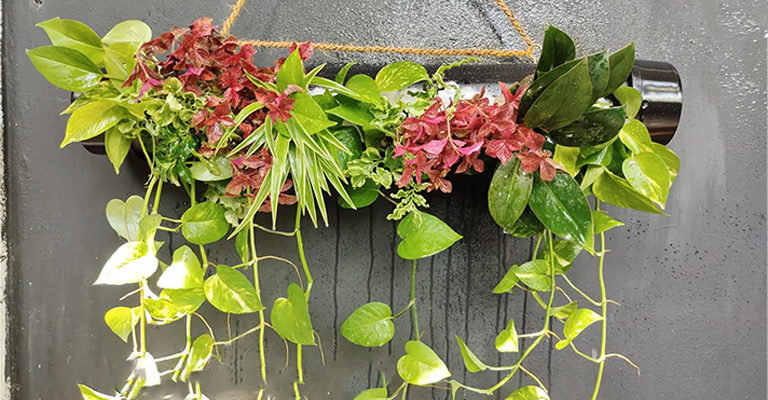
There are some tricks you can try to make it difficult for the birds to stay in your hanging plants. It’s all about making some uncomfortable situations near the plants for them. Here are the tricks you should follow.
Using Toothpicks or Plastic Forks
One effective method to discourage birds from nesting in hanging baskets is by creating uncomfortable surfaces.
Inserting toothpicks or plastic forks into the soil of the hanging basket makes it challenging for birds to find a suitable spot to perch or build a nest.
The sharp points of the toothpicks or the prongs of the forks create an unpleasant sensation when birds attempt to land on the surface.
This discomfort encourages them to seek alternative locations for nesting, reducing the likelihood of them choosing the hanging baskets.
Placement and Spacing Considerations
When using toothpicks or plastic forks, proper placement and spacing are essential for optimal effectiveness. Place the toothpicks or forks strategically throughout the soil of the hanging basket, ensuring that they cover a significant portion of the surface.
Distribute them evenly, leaving no large gaps where birds could potentially find a comfortable spot to perch.
The goal is to create an overall surface that is consistently uncomfortable for birds, discouraging them from attempting to nest or rest in the hanging basket.
Alternative Materials for Deterring Birds
In addition to toothpicks and plastic forks, there are alternative materials that can be used to create uncomfortable surfaces for birds.
For example, using small twigs with sharp ends or incorporating prickly plants, such as cacti or thorny shrubs, in the hanging basket can serve as natural deterrents.
These materials provide an additional layer of discomfort for birds and make nesting or perching less desirable.
Experimenting with different materials can help find the most effective combination for deterring birds in your specific garden environment.
Creating uncomfortable surfaces in hanging baskets is an effective strategy to discourage birds from nesting or perching.
By using toothpicks or plastic forks, strategically placing them with proper spacing, and exploring alternative materials, we create an environment that birds find uncomfortable and unsuitable for their nesting or resting needs.
This method, along with other bird deterrence techniques, helps protect our hanging plants and maintain a bird-free space in our gardens.
Peppermint Oil and Scents
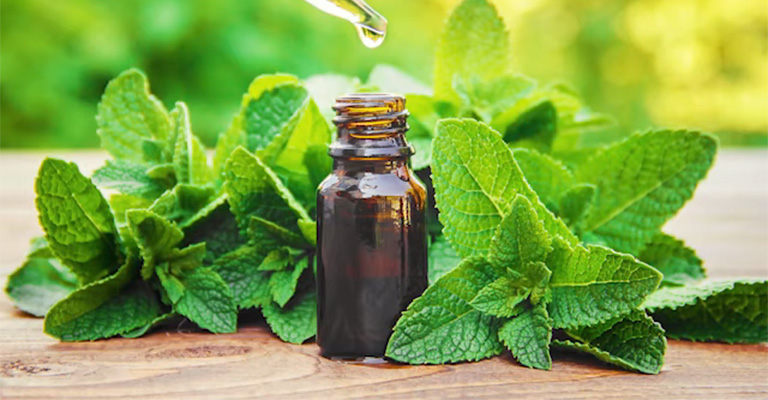
Birds have a keen sense of smell, and certain scents can be repulsive or unpleasant to them. Understanding birds’ sensitivity to smells is crucial when using scent-based deterrence methods.
While individual bird species may have varying sensitivities, many birds find strong scents, such as peppermint, unpleasant.
By utilizing scents that birds dislike, like peppermint oil, we can create an environment that birds find unappealing for nesting or roosting.
Making Peppermint Oil-soaked Cotton Balls
One effective way to use peppermint oil for bird deterrence is by soaking cotton balls in the oil. Start by saturating a few cotton balls with a few drops of pure peppermint oil.
Place these peppermint oil-soaked cotton balls strategically in the hanging basket, ensuring they are spaced throughout the basket. The scent of peppermint oil will waft through the air, creating an unpleasant environment for birds.
Remember to regularly refresh the cotton balls with peppermint oil to maintain the potency of the scent.
Placement and Maintenance Tips for Scent-based Deterrence
When using scent-based deterrence, proper placement and maintenance are key to effectiveness. Place the peppermint oil-soaked cotton balls in areas of the hanging basket where birds are likely to land or build nests.
Focus on locations near the edges or perching spots. Additionally, consider placing the cotton balls closer to the entrance or opening the hanging basket to deter birds from exploring further.
Regular maintenance is crucial to ensure the effectiveness of scent-based deterrence. Over time, the scent of the peppermint oil may diminish. Therefore, it is essential to periodically refresh the cotton balls with fresh peppermint oil.
Fake Predators
Using fake predator birds is a commonly employed method to deter birds from nesting in hanging baskets. Various types of fake predator birds can be utilized, including decoy owls, hawks, or falcons.
These decoys are designed to resemble natural bird predators, creating a sense of danger and discouraging birds from approaching the hanging baskets.
The realistic appearance of these decoys, combined with their presence, can effectively deter birds and minimize nesting activities.
Proper Placement and Positioning for Effectiveness
To maximize the effectiveness of fake predator birds, proper placement and positioning are crucial. It is important to position the decoys in areas where birds are likely to land or approach the hanging baskets.
Place the fake predator bird in a prominent location, such as a nearby branch or a post, where it can be easily seen by birds.
The decoy should be positioned to have a clear line of sight to the hanging baskets, creating an impression that the area is being monitored by a potential threat.
This strategic placement enhances the deterrent effect and increases the chances of birds avoiding the hanging baskets.
Rotating Decoys to Avoid Habituation
Birds can quickly become habituated to stationary decoys if they realize that they pose no actual threat. To prevent habituation and maintain the effectiveness of fake predator birds, it is recommended to periodically rotate the decoys.
Move the decoys to different locations or change their positions within the garden. This rotation creates an element of unpredictability and prevents birds from becoming accustomed to the decoys, thus ensuring their continued effectiveness as a deterrent.
Additionally, consider occasionally changing the appearance of the decoys, such as repositioning their wings or adjusting their postures. These small alterations can add to the perception of movement and make the decoys appear more lifelike.
Reflective Bird Tape
Reflective bird tape is a simple yet effective method for deterring birds from nesting in hanging baskets. The principle behind its effectiveness lies in the way birds perceive reflective surfaces.
Birds are naturally cautious and easily startled by sudden movements or flashes of light. When they encounter reflective bird tape, the sunlight or artificial light reflects off the tape, creating flashes and movements that mimic the presence of a potential threat.
This visual disturbance deters birds from approaching the hanging baskets, reducing the likelihood of nesting or perching.
Choosing the Right Tape and Installation Techniques
When selecting reflective bird tape, opt for a tape specifically designed for bird deterrence. These tapes are typically made of lightweight, durable materials that can withstand outdoor conditions.
Look for tapes with highly reflective surfaces, such as holographic or metallic finishes, as they produce the most noticeable flashes of light. It is essential to follow the manufacturer’s instructions for installation.
Generally, the tape can be cut into strips and secured near the hanging baskets, ensuring they are long enough to move freely in the wind and create reflective movements.
For installation, consider attaching the tape to nearby structures, such as fences, posts, or branches, in close proximity to the hanging baskets. Alternatively, you can tie the tape directly to the hanging baskets themselves.
Ensure that the tape is visible and able to catch sunlight or artificial light effectively. By positioning the reflective bird tape strategically, you enhance its ability to deter birds and protect the hanging baskets.
Additional Tips for Maximizing Effectiveness
To maximize the effectiveness of reflective bird tape, consider the following tips:
- Regular maintenance: Inspect the tape periodically to ensure it is intact and properly secured. Replace any damaged or worn-out tape promptly to maintain its reflective properties.
- Combine with other deterrents: Reflective bird tape can be used in conjunction with other bird deterrence methods, such as fake predator birds or creating uncomfortable surfaces. Combining multiple deterrents increases the overall effectiveness of bird control.
- Variation in tape placement: Birds may become accustomed to the reflective tape if it remains in the same position for an extended period. To prevent habituation, periodically change the location or orientation of the tape. This variation keeps birds on edge and discourages them from approaching the hanging baskets.
By utilizing reflective bird tape and understanding its benefits, choosing the appropriate tape and installation techniques, and implementing additional tips for maximizing effectiveness, we can successfully deter birds from nesting in hanging baskets.
This method offers a visual deterrent that mimics the presence of a threat and provides an additional layer of protection for our plants.
Creating a Bird-friendly Garden Alternative
We never suggest any brutal option to move birds from your hanging plants. Creating a bird-friendly garden can be the best idea in this case. Here are some tips for that.
Establishing a Separate Bird-friendly Area
One alternative approach to deter birds from nesting in hanging baskets is to establish a separate bird-friendly area within your garden. Designate a specific area where birds are welcome to nest, feed, and rest.
This can be achieved by creating birdhouses, installing nesting boxes, or setting up bird-friendly structures like perches or branches. By providing an attractive and suitable alternative space for birds, they are more likely to choose that area over your hanging baskets.
This approach not only protects your plants but also promotes bird conservation and enjoyment.
Providing Bird Feeders and Water Sources
Another important aspect of creating a bird-friendly garden alternative is providing bird feeders and water sources. By offering a variety of bird feeders with different types of bird seed or nectar, you attract birds to a designated feeding area away from your hanging baskets.
Similarly, installing bird baths, shallow pools, or water features provides birds with a reliable water source.
Ensuring these feeders and water sources are regularly maintained and kept clean enhances their appeal to birds and encourages them to visit the designated bird-friendly area instead of your hanging baskets.
Encouraging Natural Habitats for Birds Nearby
In addition to providing specific bird-friendly features, it is essential to encourage natural habitats for birds in the vicinity of your garden.
This can be achieved by planting native trees, shrubs, and flowering plants that provide food, shelter, and nesting sites for birds.
Consider incorporating a variety of plant species that attract different types of birds, such as berry-bearing plants or those with dense foliage for nesting.
Creating a diverse and thriving ecosystem in your garden increases its overall appeal to birds and encourages them to establish their homes and forage in natural areas, reducing their inclination to nest in your hanging baskets.
By establishing a separate bird-friendly area, providing bird feeders and water sources, and encouraging natural habitats for birds nearby, you create an alternative space that appeals to birds and redirects their nesting and foraging activities away from your hanging baskets.
This approach not only protects your plants but also fosters a harmonious coexistence with birds, allowing you to appreciate their beauty and contribute to their well-being in your garden.
FAQs
No, using toothpicks or plastic forks in the soil of hanging baskets will not harm the birds. These materials create an uncomfortable surface that discourages birds from perching or building nests.
However, it is important to space them out adequately to ensure birds can still find suitable perching spots elsewhere in the garden.
It is recommended to replace the peppermint oil-soaked cotton balls every two to three weeks to maintain their effectiveness. Over time, the scent of the peppermint oil may fade, reducing its deterrence.
By regularly refreshing the cotton balls with fresh peppermint oil, you ensure a strong scent that repels birds from the hanging baskets.
Yes, you can use multiple types of fake predator bird decoys to enhance their effectiveness. Birds may become accustomed to a single decoy over time, so using different decoys, such as owls, hawks, or falcons, can increase the element of surprise and make the deterrent more effective.
Rotate the decoys periodically and change their positions to prevent birds from habituating to their presence.
The effectiveness of reflective bird tape can vary depending on factors such as weather conditions and bird behavior. Over time, the reflective properties of the tape may diminish, reducing its effectiveness.
It is recommended to inspect the tape regularly and replace any worn-out or damaged sections. By ensuring the tape remains in good condition, you can maintain its effectiveness as a deterrent.
Absolutely! Combining multiple bird deterrence methods is often more effective than relying on a single approach. For example, you can use reflective bird tape along with fake predator bird decoys or implement toothpicks or plastic forks in the soil.
By using a combination of methods, you create a multi-layered deterrent system that makes your hanging baskets less appealing to birds and reduces the likelihood of nesting or perching.
Conclusion
Deterring birds from nesting in hanging baskets requires a combination of proactive measures and bird-friendly alternatives.
By promptly removing nests, creating uncomfortable surfaces, utilizing scents and fake predators, and incorporating reflective bird tape, we can protect our plants.
Additionally, establishing separate bird-friendly areas and providing natural habitats nearby promote harmony between birds and our gardens.
Once again, I would like to suggest you not harm those poor birds who come to your home as a guest. Try to provide shelter and food if you can. Best of luck.